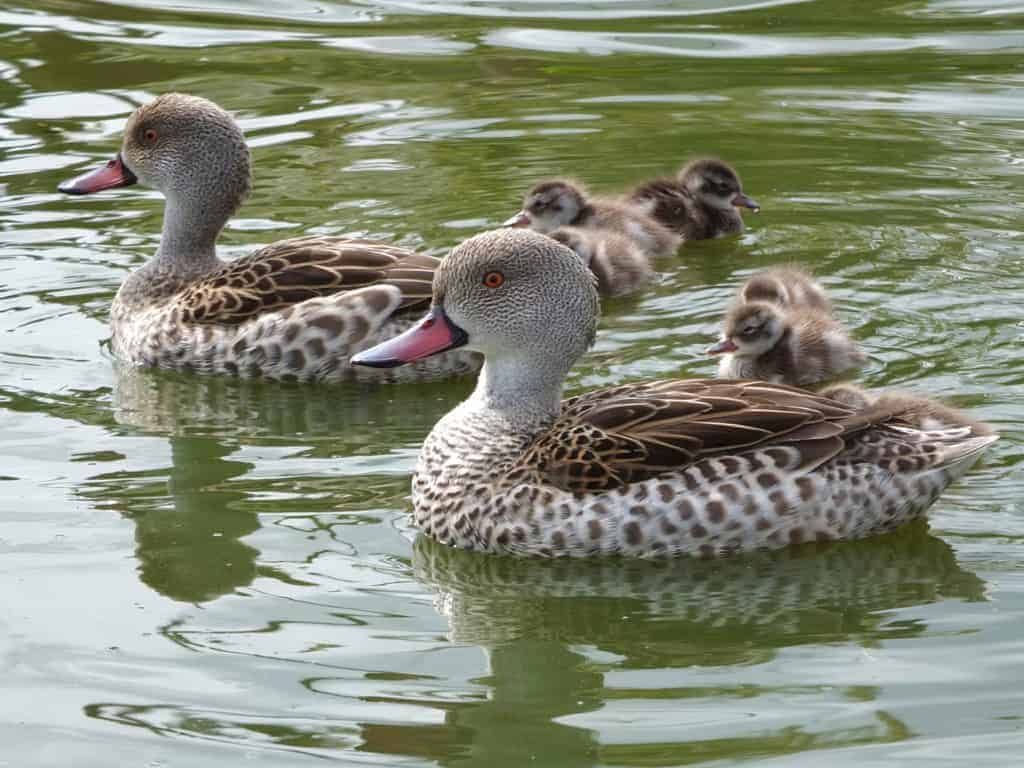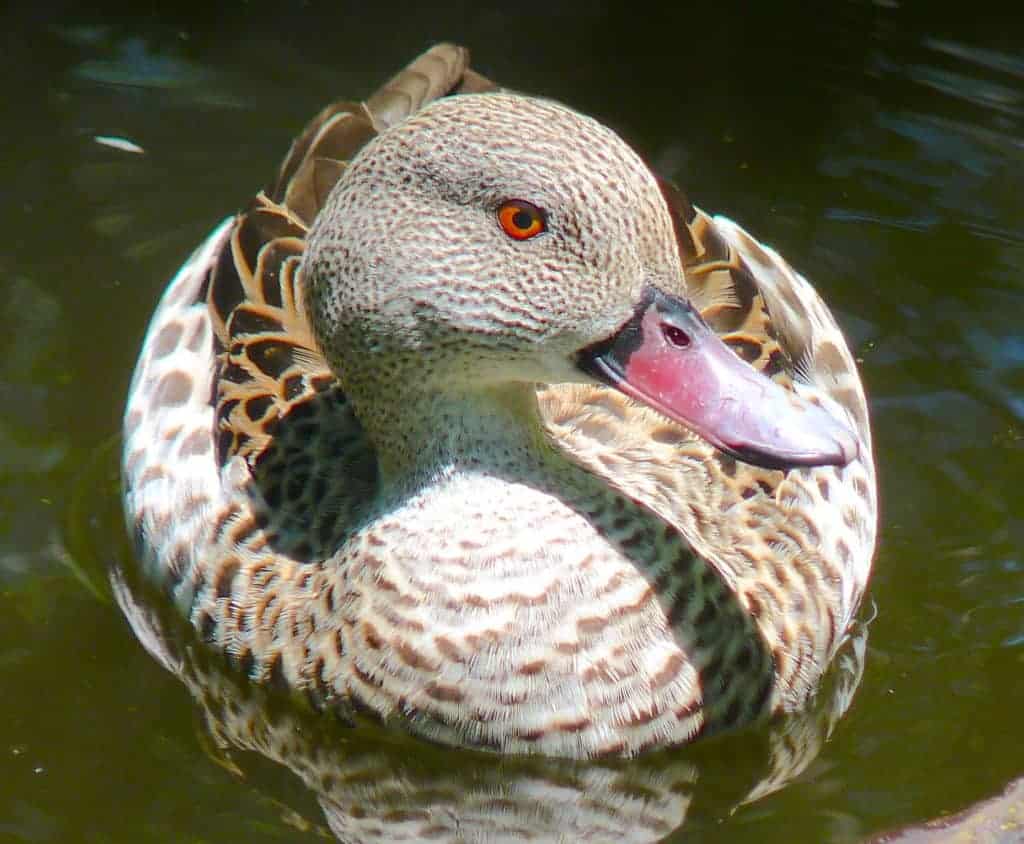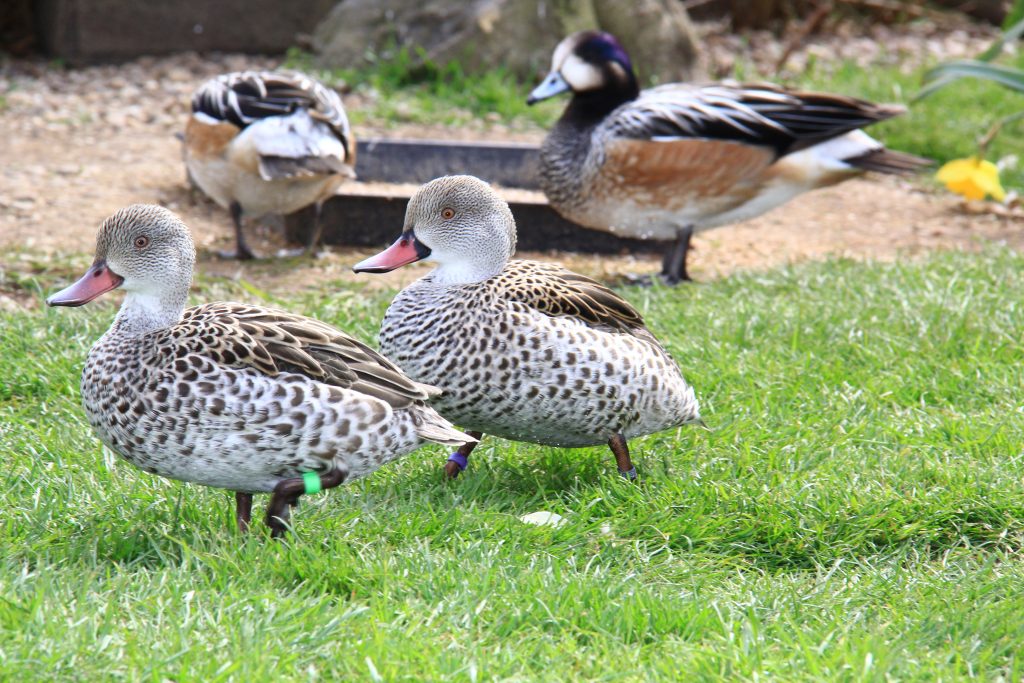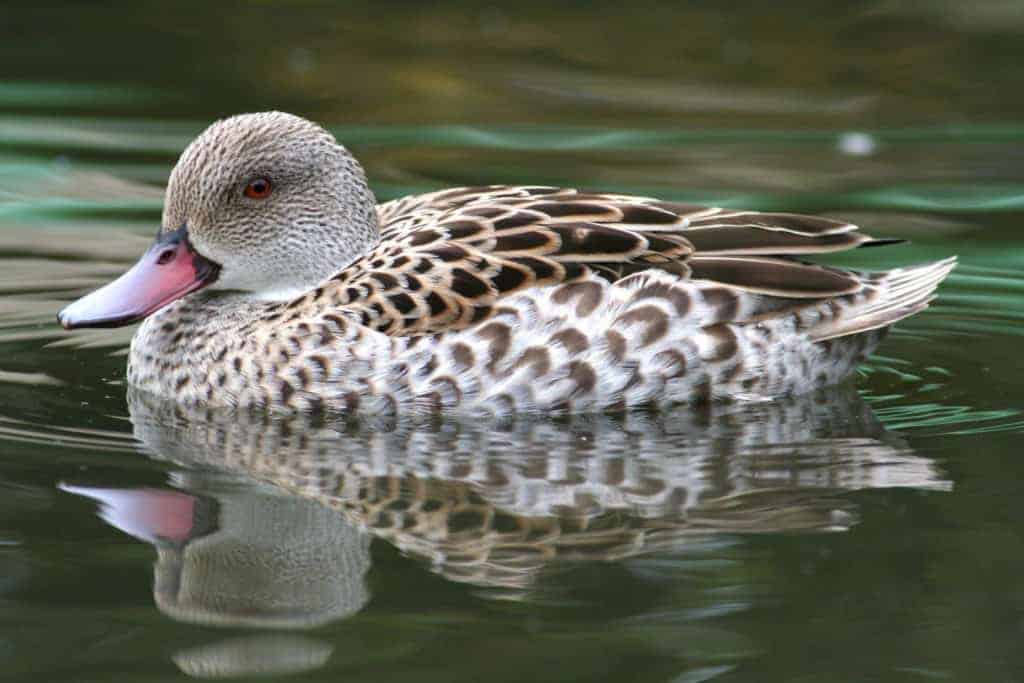Cape Teal

Distribution of the Cape Teal is throughout South Africa except the easternmost part. They move about according to rainfall and seasonal conditions. They will frequent large and small areas of water and marshes, in open and savannah country; also often found around salt lakes.

Anas capensis
The Cape Teal is a relatively pale coloured bird, but nevertheless very attractive. Much of the plumage is distinctly spotted and the markings on the bill are light pink with narrow black margins and base, with a blue tinge on the anterior portion.
Both vegetable and animal matter constitute the diet of this dabbling duck. Mixed corn or wheat along with a compound pellet are welcomed. Cape Teal are not very vocal, but during the breeding season the female emits a low quacking sound and the male has a rather husky whistle.
In captivity they are treasured because of their pretty shape, their light tone and their beautiful pink bill. Drakes can be over-amorous and they may hybridise with other dabbling ducks.


Although not cavity nesters in the wild, the female is not averse to laying her eggs in a raised box erected in the enclosure.
Cape Teal are not difficult to breed and may produce two or three clutches of eggs in a year. The laying season is variable in Europe and they may start as early as February. 6 to 11 cream-coloured eggs are incubated for an average of 26 days.